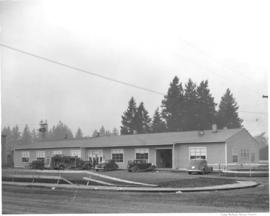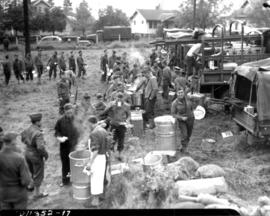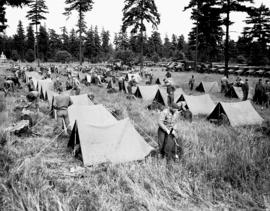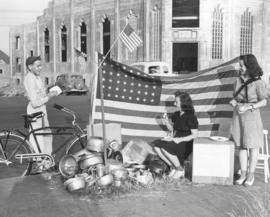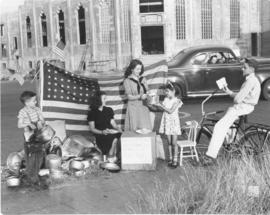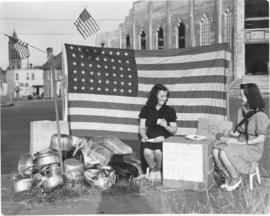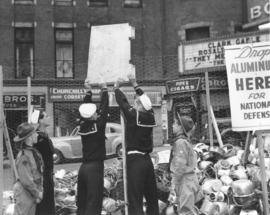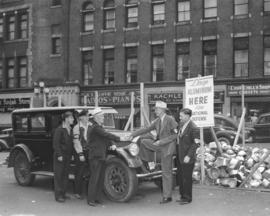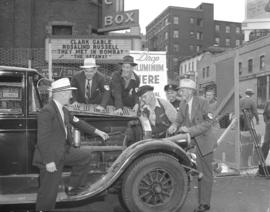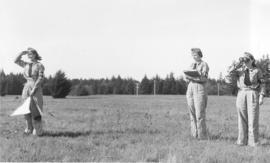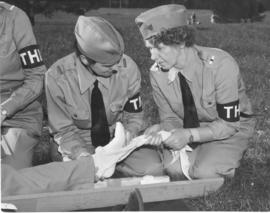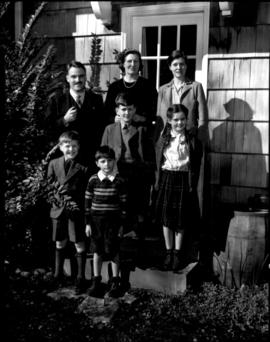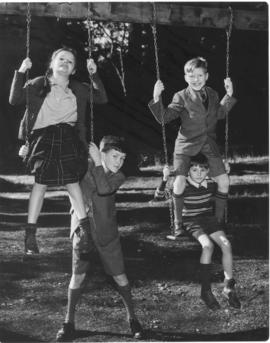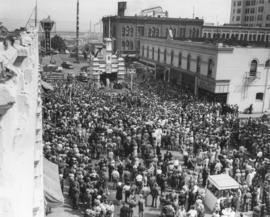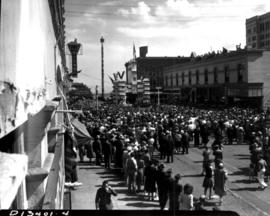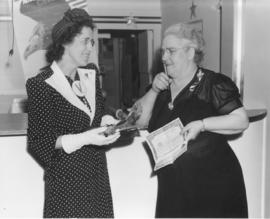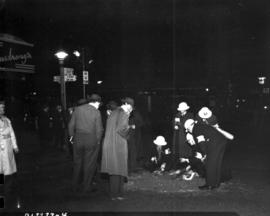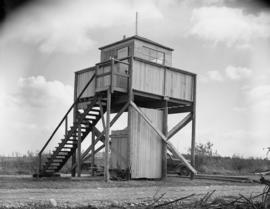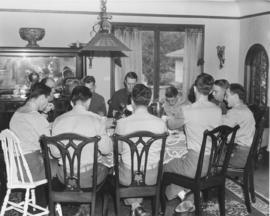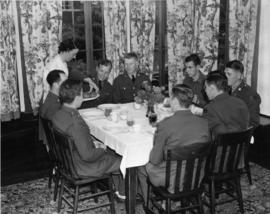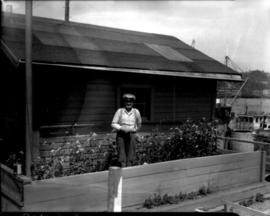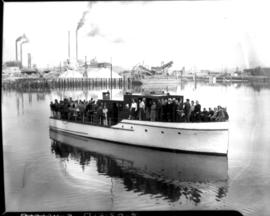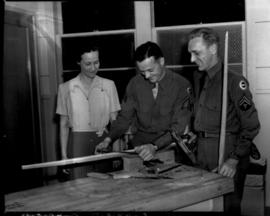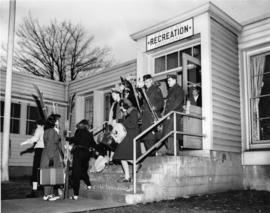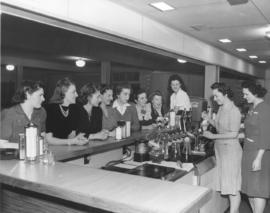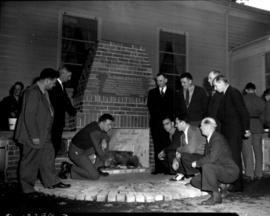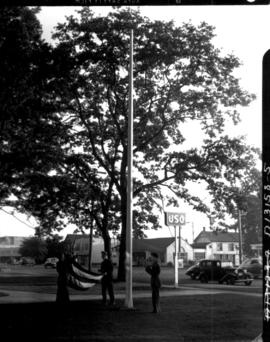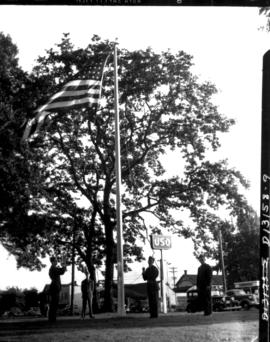This venerable Pierce Arrow rolled up to the defense metal "corral" at 9th and Broadway on July 23, 1941 and was donated to Tacoma's aluminum drive by Cole E. Oliver, owner of Oliver Taxi and Ambulance Company, and William E. Erickson, who worked with him. The vehicle was purchased as an ambulance and at its prime was valued at $9,000. Aluminum Drive Chairman Russell N. Anderson hoped to get 1,000 pounds of the metal out of the car, which was made almost entirely of aluminum. Pictured around the vehicle, left to right, are Cole E. Oliver, Tommy Burns, Kenny Johnson, William Erickson, Police Officer Ross Mowre and Russell Anderson. In the background is the Music Box Theater, 902-14 Broadway, showing Clark Gable and Rosalind Russell in "They Met in Bombay." For several years in the early to mid-1920s the Pierce Arrow was manufactured with bodies cast of aluminum. This appears to be a 1926 Model 80 4-door sedan. (T. Times 7/23/1941, pg. 3)
World War, 1939-1945--Scrap drives; Pierce Arrow automobile; Oliver, Cole; Erickson, William; Anderson, Russell N.; Burns, Tommy; Johnson, Kenny; Mowre, Ross; Music Box Theatre (Tacoma);
